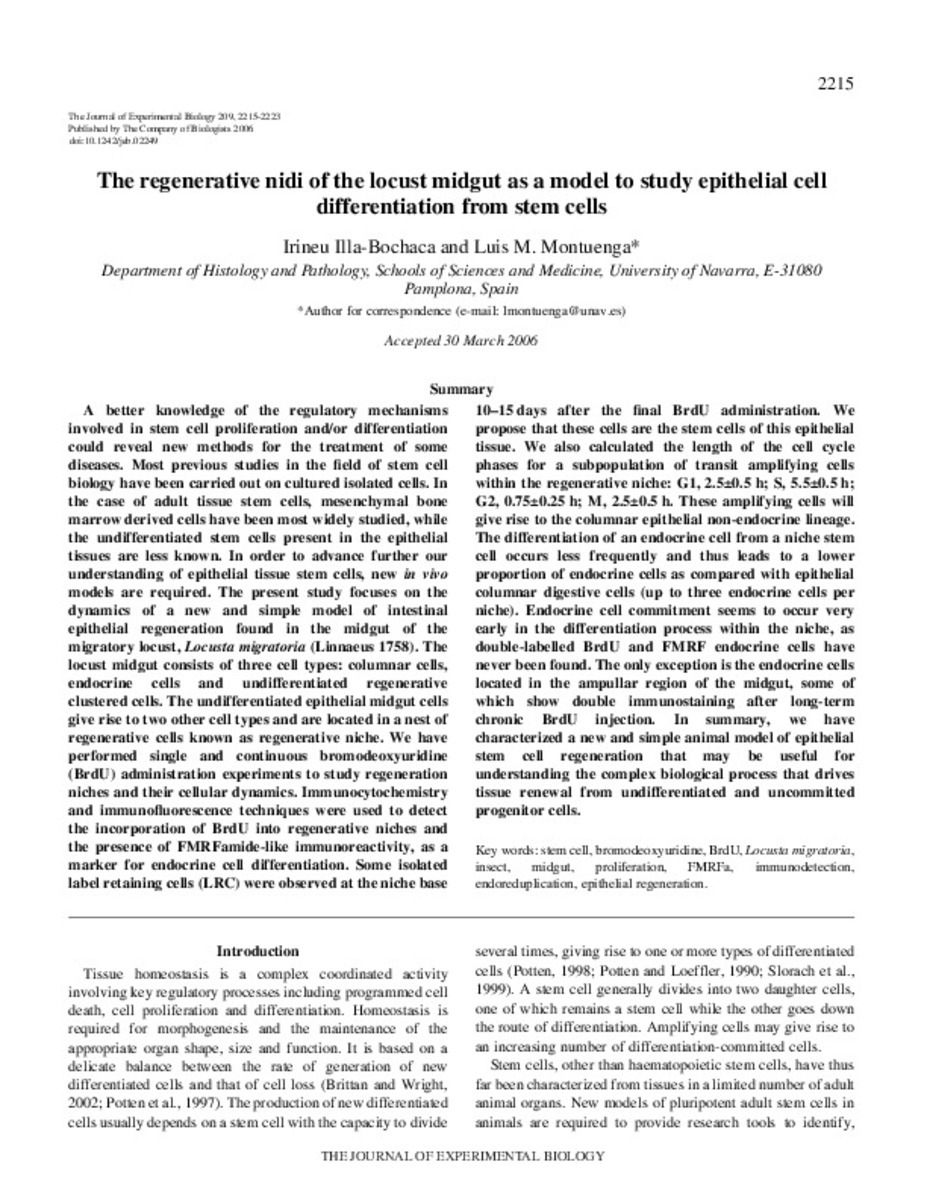The regenerative nidi of the locust midgut as a model to study epithelial cell differentiation from stem cells
Palabras clave :
Stem cell
Bromodeoxyuridine
BrdU
Locusta migratoria
Insect
Midgut
Proliferation
FMRFa
Immunodetection
Endoreduplication
Epithelial regeneration
Fecha de publicación :
2006
Editorial :
Company of Biologists
Cita:
Illa-Bochaca I, Montuenga LM. The regenerative nidi of the locust midgut as a model to study epithelial cell differentiation from stem cells. J Exp Biol 2006 Jun;209(Pt 11):2215-2223.
Aparece en las colecciones:
Estadísticas e impacto
0 citas en

0 citas en

Los ítems de Dadun están protegidos por copyright, con todos los derechos reservados, a menos que se indique lo contrario.










